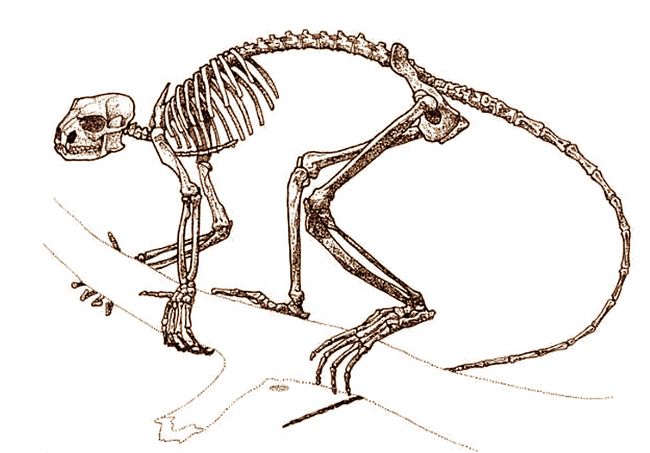Athena Review Image Archive ™
Smilodectes gracilis skeleton

Skeleton of Smilodectes gracilis (after Fleagle 1988)
Smilodectes was an adapid primate from the Early and Middle Eocene in Wyoming. It is related to Notharctus, and is classed in the Nothacidae family of adapids, or lemur-like early primates. The species S. gracilis was named by Marsh in 1871. Since then, two additional species have been named, S. mcgrewi and S. gingerichi.
Smilodectes has a post-orbital bar, common to both adapidae and omomyid primates. It has a small cranium, with the foramen magnum placed at the back of the skull, on the occipatal bone. It has a relatively short snout, with rounded frontal bone as compared to other nothactines.
S. gracilis had a dental formula of 2:1:4:3 on both the upper and lower jaw.It has comparatively reduced olfactory bulbs and a more expanded visual cortex., which suggests that it was a diurnal species. S. gracilis had a cranial capacity of 9.5 cc.
S. gracilis had an average body mass of around 2.1 kilograms. Based upon its postcranial skeleton, it was a vertical clinger and leaper with and grasping thumbs and toes.
References
Fleagle, J. G. (1988, 1999). Primate Adaptation and Evolution. New York: Academic Press.
Simons, E. 1964
.
Copyright © 1996-2020 Rust Family Foundation (All Rights Reserved).